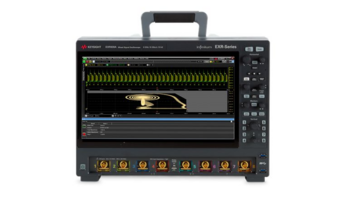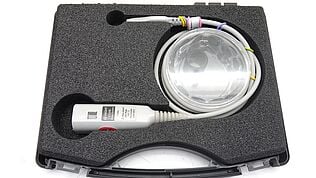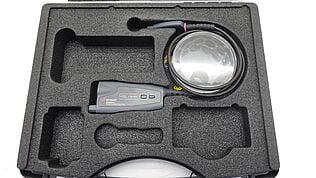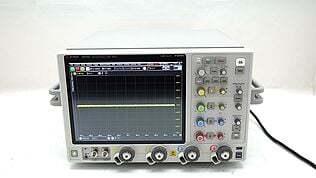- Introduction
- What is Cutoff Frequency?
- The Role of Cutoff Frequency
- Types of Filters and Their Cutoff Frequencies
- Low Pass Filters
- High Pass Filters
- Band Pass Filters
- Band Stop Filters
- Calculating Cutoff Frequency
- Applications of Cutoff Frequency
- Audio Processing
- Radio Communications
- Data Transmission
- Oscilloscopes and Signal Generators
- Cutoff Frequency in Digital Signal Processing
- Conclusion
- Whenever You’re Ready, Here Are 5 Ways We Can Help You
"The beauty of Cutoff Frequency is that it isn't just a static number on a datasheet. It's a dynamic point of transition that shapes the audible and visual world around us," – Dr. Thomas K. Parker, Ph.D., Electronics Engineer.
Did you know that the functionality of many devices we use daily hinges upon an intricate balance of frequencies? Cut-off frequency is a crucial factor in a wide range of electrical engineering and signal processing applications, such as smartphones, radios, oscilloscopes, and signal generators. This crucial concept can make or break the effectiveness of a filter, dictating what we hear, see, or analyze in the world of electrical signals.
Buy Oscilloscopes at a Great Discount
What is Cutoff Frequency?
Cutoff frequency, or corner frequency, is a term extensively used in the field of signal processing and electronics. It's the specific frequency point where a circuit starts to reduce or "attenuate" the intensity of the signal. Beyond this point, the system significantly decreases the power of a signal at its output compared to its input.
The cutoff frequency is typically defined as the frequency at which the power of the signal is reduced to half of its original value. This corresponds to a decrease of 3dB, or a 70.7% magnitude of the input signal.
| Key Takeaway |
|---|
| Cutoff frequency, a fundamental concept in signal processing and electronics, is the point at which a system begins to significantly attenuate the signal power, thus shaping how we perceive and interact with electronic signals. |
The Role of Cutoff Frequency
Why does cutoff frequency matter? It is an essential parameter when dealing with:
- Frequency selective filters: Cutoff frequency is the boundary that separates passband and stopband in a filter. It helps these filters suppress unwanted frequencies and allow desired ones.
- Signal clarity: Filters using the concept of cutoff frequency can cleanse a signal from unwanted noise and interferences, enhancing clarity.
- Bandwidth control: By setting the cutoff frequencies, engineers can precisely control the bandwidth of a system.
Types of Filters and Their Cutoff Frequencies
Depending on the requirement of the application, engineers utilize various types of filters. The common ones include:
Low Pass Filters
A low-pass filter allows frequencies below its cutoff frequency to pass through and attenuates frequencies above the cutoff frequency. It's like a gatekeeper that only allows low-frequency components to pass.
High Pass Filters
A high-pass filter is the opposite of a low-pass filter. It permits frequencies above its cutoff frequency and blocks frequencies below the cutoff point. Think of it as a filter that only favors high-frequency elements.
Band Pass Filters
A band-pass filter allows frequencies within a certain range to pass through, while attenuating frequencies outside that range. It has two cutoff frequencies — one low and one high — defining the 'band' of frequencies that are allowed to pass through.
Band Stop Filters
A band-stop filter, also known as a notch filter, blocks a specific band of frequencies and allows the rest to pass. Like the band-pass filter, it has two cutoff frequencies which determine the 'notch' or band of frequencies that are suppressed.
Calculating Cutoff Frequency
The ability to calculate the cutoff frequency of a circuit is a crucial skill for any electrical engineer or hobbyist. The cutoff frequency of a filter circuit, like a low-pass or high-pass filter, is primarily determined by the values of:
fc is the cutoff frequency
R is the resistance
C is the capacitance
L is the inductance
π is a mathematical constant whose approximate value is 3.14159
The general formula used for calculating cutoff frequency in an RC (resistor-capacitor) or RL (resistor-inductor) circuit is:
| Filter Type | Circuit Type | Formula for Cutoff Frequency (fc) |
| Low-Pass | RC Circuit | fc = 1 / (2πRC) |
| Low-Pass | RC Circuit | fc = 1 / (2πRC) |
| High-Pass | RL Circuit | fc = R / (2πL) |
| Band-Pass | RLC Circuit | fc1 = 1 / (2πR1C1), fc2 = 1/(2πR2C2) |
| Band-Stop | RLC Circuit | fc1 = 1 / (2π√(LC)), fc2 = R / (2πL) |
These formulas are a starting point and may not account for every real-world variable, such as component tolerances or parasitic elements. Nonetheless, they provide a solid basis for understanding how to control and manipulate the frequency response of electronic circuits.
Applications of Cutoff Frequency
As the cornerstone of any frequency selective filter, the concept of cutoff frequency finds extensive use across various sectors in electronics and communications. Let's delve deeper into these applications.
Audio Processing
In the realm of audio processing, managing the frequency content is a fundamental task. From your home stereo to a high-tech music studio, the role of cutoff frequency is significant.
For example, think about the bass, treble, and mid-knobs on your stereo. These are essentially low-pass, high-pass, and band-pass filters. The cutoff frequency is adjusted to control which frequencies get boosted or reduced. In music production, filters are used to eliminate unwanted noise (like electrical hum or hiss) or to create specific sound effects by manipulating different frequency bands.
Radio Communications
The radio frequency spectrum is a busy place, with signals from various sources competing for space. To prevent chaos, band-pass filters play an essential role.
For a radio to tune into a particular station, it needs to select the specific frequency of that station while ignoring the rest. This is where the cutoff frequencies of a band-pass filter come into play. The radio effectively alters the cutoff frequencies of its internal band-pass filter to 'tune' into the desired station.
Data Transmission
In data transmission and telecommunications, clarity is everything. Here too, cutoff frequency holds a vital role.
A typical use is in DSL (Digital Subscriber Line) technology used for internet connections. The telephone line needs to carry both the standard voice signal and the data signal simultaneously without interfering with each other. This is achieved by using a high-pass filter for the data signal and a low-pass filter for the voice signal, each with an appropriate cutoff frequency.
Oscilloscopes and Signal Generators
In electronic testing and measurement, the utilization of cutoff frequencies helps engineers focus on what's important.
An oscilloscope displays voltage signals as a function of time, allowing an engineer to analyze various signal properties. Sometimes, however, there may be unwanted noise mixed with the signal under test. By setting the cutoff frequencies of a built-in or external filter, an engineer can exclude these unwanted frequencies, providing a cleaner, more useful view of the signal.
Similarly, signal generators often include options for shaping the output signal. For instance, a function generator may include selectable low-pass, high-pass, or band-pass filtering, allowing an engineer to control the spectral content of the signal it produces.
In the field of spectrum analysis, being able to set precise cutoff frequencies is crucial. By defining the range of frequencies under consideration, you can ensure that measurements accurately represent the signal or system being analyzed. This ability to focus on specific frequency bands helps in diagnosing issues such as unwanted signal interactions or identifying sources of interference.

Cutoff Frequency in Digital Signal Processing
In the realm of digital signal processing (DSP), the concept of cutoff frequency is just as relevant and important as it is in analog systems. DSP involves the manipulation of signals that have been digitized, and these signals can also be filtered based on frequency.
Digital filters, such as Finite Impulse Response (FIR) and Infinite Impulse Response (IIR) filters, also have a cutoff frequency that determines which frequencies are passed and which are stopped. The design and implementation of these filters involve mathematical algorithms run on digital processors.
These digital filters are used extensively in various applications such as audio processing, image processing, and telecommunications.
Conclusion
Cutoff frequency is a powerful concept that shapes the way we interpret and manipulate electronic signals. By understanding and controlling the cutoff frequency, we can filter out noise, focus on desired frequency bands, and greatly improve the functionality of our electronic systems.
From enhancing the clarity of audio systems and facilitating effective radio communication to improving the accuracy of oscilloscopes and signal generators, the importance of the cutoff frequency cannot be overstated.
Whether you're an electronics enthusiast or an experienced engineer, the journey towards mastering the concept of cutoff frequency requires not just theoretical understanding, but also practical, hands-on experience. And for that, having access to reliable and high-quality testing equipment is essential.
Ready to take the next step in your journey of exploring and mastering cutoff frequencies? Visit Keysight's Used Equipment Store today. With an expansive collection of top-notch, pre-owned testing equipment, Keysight guarantees the best used equipment. Experience the reliability and performance of Keysight's solutions and take your engineering projects to the next level.

Browse Oscilloscopes at a Great Discount
Select up to 3 instruments to compare
Enable Notifications
In order to use this feature, you need to enable notifications.
Manage notification preferences
Whenever You’re Ready, Here Are 5 Ways We Can Help You
- Browse our Premium Used Oscilloscopes.
- Call tech support US: +1 800 829-4444
Press #, then 2. Hours: 7 am – 5 pm MT, Mon– Fri - Talk to our sales support team by clicking the icon (bottom right corner) on every offer page
- Create an account to get price alerts and access to exclusive waitlists.
- Talk to your account manager about your specific needs.








































